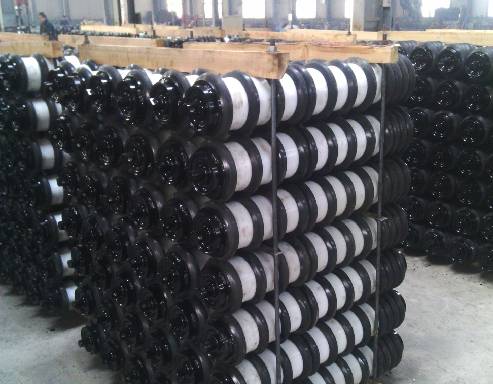 Afrikaans
Afrikaans  Albanian
Albanian  Amharic
Amharic  Arabic
Arabic  Armenian
Armenian  Azerbaijani
Azerbaijani  Basque
Basque  Belarusian
Belarusian  Bengali
Bengali  Bosnian
Bosnian  Bulgarian
Bulgarian  Catalan
Catalan  Cebuano
Cebuano  Corsican
Corsican  Croatian
Croatian  Czech
Czech  Danish
Danish  Dutch
Dutch  English
English  Esperanto
Esperanto  Estonian
Estonian  Finnish
Finnish  French
French  Frisian
Frisian  Galician
Galician  Georgian
Georgian  German
German  Greek
Greek  Gujarati
Gujarati  Haitian Creole
Haitian Creole  hausa
hausa  hawaiian
hawaiian  Hebrew
Hebrew  Hindi
Hindi  Miao
Miao  Hungarian
Hungarian  Icelandic
Icelandic  igbo
igbo  Indonesian
Indonesian  irish
irish  Italian
Italian  Japanese
Japanese  Javanese
Javanese  Kannada
Kannada  kazakh
kazakh  Khmer
Khmer  Rwandese
Rwandese  Korean
Korean  Kurdish
Kurdish  Kyrgyz
Kyrgyz  Lao
Lao  Latin
Latin  Latvian
Latvian  Lithuanian
Lithuanian  Luxembourgish
Luxembourgish  Macedonian
Macedonian  Malgashi
Malgashi  Malay
Malay  Malayalam
Malayalam  Maltese
Maltese  Maori
Maori  Marathi
Marathi  Mongolian
Mongolian  Myanmar
Myanmar  Nepali
Nepali  Norwegian
Norwegian  Norwegian
Norwegian  Occitan
Occitan  Pashto
Pashto  Persian
Persian  Polish
Polish  Portuguese
Portuguese  Punjabi
Punjabi  Romanian
Romanian  Russian
Russian  Samoan
Samoan  Scottish Gaelic
Scottish Gaelic  Serbian
Serbian  Sesotho
Sesotho  Shona
Shona  Sindhi
Sindhi  Sinhala
Sinhala  Slovak
Slovak  Slovenian
Slovenian  Somali
Somali  Spanish
Spanish  Sundanese
Sundanese  Swahili
Swahili  Swedish
Swedish  Tagalog
Tagalog  Tajik
Tajik  Tamil
Tamil  Tatar
Tatar  Telugu
Telugu  Thai
Thai  Turkish
Turkish  Turkmen
Turkmen  Ukrainian
Ukrainian  Urdu
Urdu  Uighur
Uighur  Uzbek
Uzbek  Vietnamese
Vietnamese  Welsh
Welsh  Bantu
Bantu  Yiddish
Yiddish  Yoruba
Yoruba  Zulu
Zulu snub pulley in belt conveyor
Understanding the Role of Snub Pulleys in Belt Conveyors
Belt conveyors are crucial components in various industries, providing an efficient means for transporting materials over a wide range of distances. Among the several elements that constitute a belt conveyor system, the snub pulley plays a pivotal role, significantly influencing the system's performance and reliability.
Understanding the Role of Snub Pulleys in Belt Conveyors
The design of a snub pulley is typically characterized by its smaller diameter compared to the drive pulley. This allows the conveyor belt to make tighter bends, which is crucial in areas where space is limited. Additionally, the smaller size of the snub pulley contributes to reducing the overall weight of the conveyor system, resulting in lower energy consumption and enhanced performance.
snub pulley in belt conveyor

One of the primary functions of the snub pulley is to adjust the tension of the belt. Proper tension is essential for the effective functioning of a belt conveyor, as it prevents the belt from sagging or slipping off the pulleys. By effectively creating a change in the direction of the belt, snub pulleys aid in maintaining optimal tension, which is key to ensuring the longevity of the belt and the overall conveyor system.
Moreover, snub pulleys also serve a vital role in the alignment of the belt. Misalignment can lead to excessive wear and tear on the belt, pulleys, and other components of the conveyor system. By properly redistributing the belt load and guiding its path, snub pulleys help mitigate these issues. Regular inspection and maintenance of snub pulleys are critical to ensure that they are operating efficiently, and any signs of wear should be addressed promptly to avoid costly downtimes.
It is essential to understand that the effectiveness of a snub pulley is influenced by several factors, including its position, angle, and diameter. Engineers must give careful consideration to these variables during the design phase to optimize the performance of the entire belt conveyor system. The strategic placement of snub pulleys within the conveyor layout can lead to significant improvements in material handling processes, reducing operational costs and enhancing productivity.
In conclusion, snub pulleys are indispensable components in belt conveyor systems, playing a crucial role in enhancing the conveyor's performance. By improving traction, managing tension, and ensuring belt alignment, snub pulleys contribute to the efficiency and reliability of material transport systems across various industries. As technology advances and the demands for efficient material handling increase, the role of snub pulleys will continue to be vital, necessitating ongoing research and innovation in their design and application.
-
Revolutionizing Conveyor Reliability with Advanced Rubber Lagging PulleysNewsJul.22,2025
-
Powering Precision and Durability with Expert Manufacturers of Conveyor ComponentsNewsJul.22,2025
-
Optimizing Conveyor Systems with Advanced Conveyor AccessoriesNewsJul.22,2025
-
Maximize Conveyor Efficiency with Quality Conveyor Idler PulleysNewsJul.22,2025
-
Future-Proof Your Conveyor System with High-Performance Polyurethane RollerNewsJul.22,2025
-
Driving Efficiency Forward with Quality Idlers and RollersNewsJul.22,2025





























